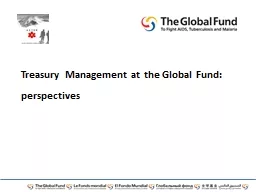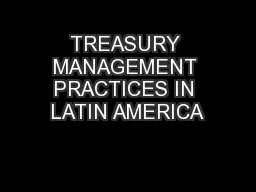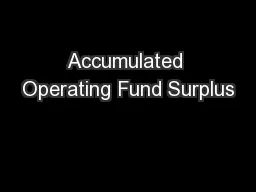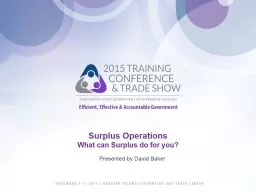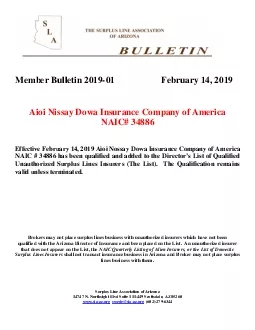PPT-Active Investment of Surplus Treasury Cash
Author : test | Published Date : 2017-06-23
IMF FOTEGAL Workshop Washington DC 17 February 2017 John Gardner Consultant What is Meant by Surplus Cash Surplus cash can be generated through Structural surpluses
Presentation Embed Code
Download Presentation
Download Presentation The PPT/PDF document "Active Investment of Surplus Treasury Ca..." is the property of its rightful owner. Permission is granted to download and print the materials on this website for personal, non-commercial use only, and to display it on your personal computer provided you do not modify the materials and that you retain all copyright notices contained in the materials. By downloading content from our website, you accept the terms of this agreement.
Active Investment of Surplus Treasury Cash: Transcript
Download Rules Of Document
"Active Investment of Surplus Treasury Cash"The content belongs to its owner. You may download and print it for personal use, without modification, and keep all copyright notices. By downloading, you agree to these terms.
Related Documents



